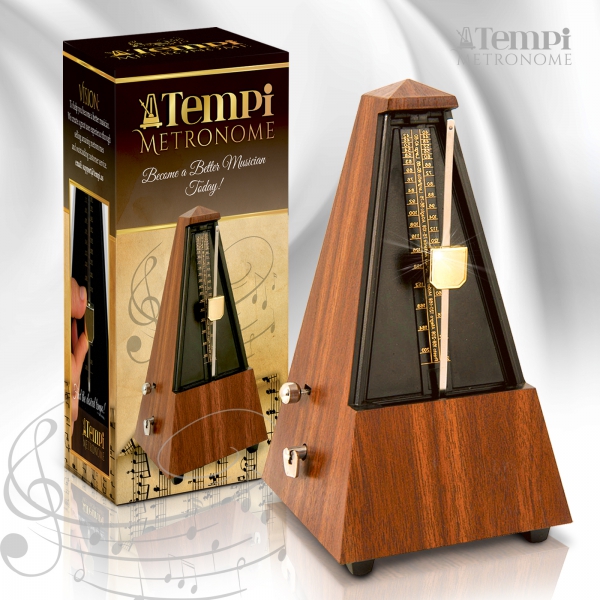How the Mechanical Metronome, a practice tool used by nearly every musician, helps increase musical performance
One of the most valuable tools for becoming better in music that has been around for centuries is the mechanical metronome. Take a look and discover how it is used, how to find the right one and a recommendation of a metronome that seems to be a great match for musicians.

The mechanical metronome is an interesting invention which was created in 1815 by an engineer named Johann Majelzel. The device itself has since then been used by musicians, teachers and students to help improve rhythm and timing. Inside of the device are gears, which twist and cause the adjacent pendulum on the mechanical metronome to move back and forth. Every time the pendulum reaches on side, it is known as a beat, in which the gears click and make a tick/tock sound. This accurate beat give the musician the ability to practice and improve their tempo. Unfortunately, most humans do not have perfect rhythm when playing music and the metronome provides the ability to improve. Not only are metronomes used for music but also where accurate rhythm is needed, for example CPR training, gold swing techniques and even getting a better night's sleep! For the sake of this article though, it will stick to musical performance.
Mechanical metronomes are preferred over other metronomes, depending on what the musician has in mind to accomplish. If he/she doesn't need very advanced features, a mechanical metronome is the way to go. This offers simplicity for the user, reliability and no concerns revolving changing batteries. One with metal gears is preferable that also compliments the instrument. On the other hand, not every mechanical metronome is a good metronome to use.
The important questions to ask are , "What will I use this metronome for?" Will it be taken to and from music practice, will it be used often, or is it just there to decorate the music room? If it is used, is it accurate? How long will it last? How much does it cost?
Based upon market research, this one mechanical metronome was discovered. The aesthetics, durability and accuracy seem to be well received. The metronome has a mahogany grain plastic veneer which looks like the expensive wooden ones, but it is much more affordable. Not only would it compliment the music room, but it seems like it would be a great fit even on top of an expensive grand piano. The gears are made of steel, which provide accuracy, reliability and ease of use. The average metronome on the market winds for about 10 minutes and this one is almost double. Finally, it even provides a beat bell, which actually helps musicians practice rhythm and the beat of each measure for getting their music down quickly and correctly. Finally, its very durable to take to practice lessons!
The reason this one was chosen was not only is it rated 5 stars and sold on the trusted Amazon.com platform, it offers a 2-Year Warranty and Free 2-Day Shipping for Prime Members. This valuable practice tool helps increase musical performance and is used by many musicians. It can be found on Amazon here
More information about the company can be found here which sells this mechanical metronome .

